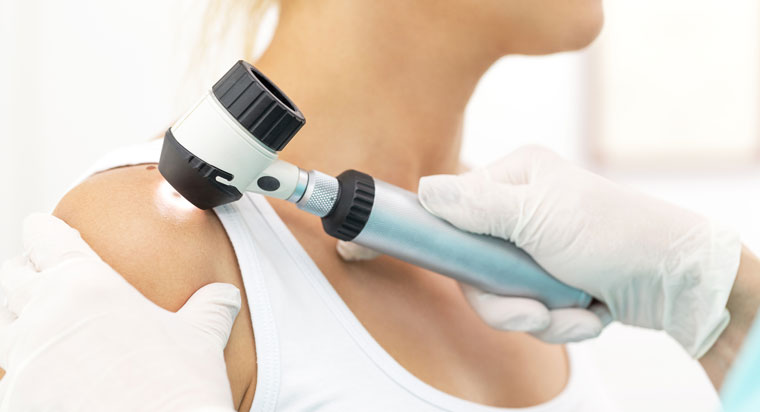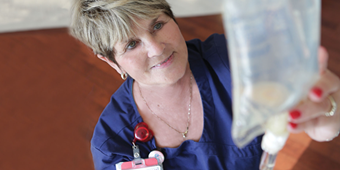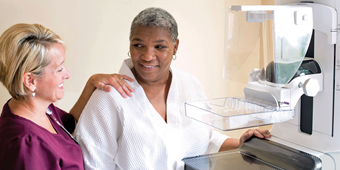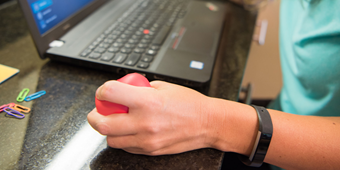Mole Mapping: Early Detection For Skin Cancer

Answer a few questions and we'll provide you with a list of primary care providers that best fit your needs.
Have you ever heard of mole mapping? No, it isn’t a way to track down the critters ruining your yard. Rather, it’s an approach to screening your skin to look for changes to moles and other skin lesions that could be cancerous or precancerous.
“While everyone should have a skin examination as part of their annual physical exam with the primary care doctor, certain people are at high risk for skin cancer and need to be monitored very closely,” says R. Michael Johnson, MD, of Advanced Plastic and Hand Surgery. Patients with a personal or strong family history of skin cancer are in the high risk category.
Skin cancer — which includes basal cell carcinoma, Nonmelanoma is the most common skin cancer with approximately 300,000 new cases each year in the USA., squamous cell carcinoma and melanoma — is the most common cancer in the United States. When skin cancer is diagnosed and removed early, it is usually curable. That’s where mole mapping comes in.
When skin cancer is diagnosed and removed early, it is usually curable. That’s where mole mapping comes in.
What Is Mole Mapping?
Mole mapping is a screening to detect skin cancer as early as possible.
Mole mapping, also known as Automated Total Body Mapping (ATBM), involves a specialized computer taking photos of your entire body and then combining these photos into a complete image of your body. This baseline image is then compared to your whole body photograph during your follow-up visit (usually the next year). The artificial intelligence in the computer will compare your images and highlight which lesions are the same, which are new, and which are changing. Then you can track them from year to year for changes.
Follow-up times vary depending on your risk factors. Often, it’s suggested to come in annually, but you may be asked to come back sooner based on your health history.
How Is Mole Mapping Done?
 You will be taken to a room specifically dedicated to skin examination and body mapping. (Yes, you’ll have to strip down
to your undies.) But newer technology has made the process easier and more reliable. With this system, a camera sits on a rail that moves back and forth to capture a full-body scan. You will be asked by the nurse or doctor to move into very specific
positions as guided by the computer to make sure the images are perfect.
You will be taken to a room specifically dedicated to skin examination and body mapping. (Yes, you’ll have to strip down
to your undies.) But newer technology has made the process easier and more reliable. With this system, a camera sits on a rail that moves back and forth to capture a full-body scan. You will be asked by the nurse or doctor to move into very specific
positions as guided by the computer to make sure the images are perfect.
Mole mapping does not replace the clinical exam you have with your family doctor plastic surgeon or dermatologist. The two are used together to help more thoroughly assess concerns related to your skin.
“Having a baseline to work from is really helpful, since it can be hard for both doctors and patients to remember the exact size and look of a mole from year to year,” Dr. Johnson says.
Why Is Mole Mapping Beneficial?
Mole mapping can help identify skin cancers early and, in some cases, reduces the need for biopsies. Those at high risk for skin cancer should talk with their doctor about the possibility of mole mapping. This includes people who have:
- A large number of moles
- A family history of skin cancer
- Congenital nevi – moles present at birth that can turn into skin cancer
- Atypical moles, also called dysplastic nevi
“Many cases of skin cancer develop as people age,” Dr. Johnson says. “As more people are living longer, we will be seeing more cases of skin cancer.” Mole mapping is a powerful tool to help in the fight against cancer.
Your primary care provider can refer you for further evaluation as needed.
Answer a few questions and we'll provide you with a list of primary care providers that best fit your needs.
Source: R. Michael Johnson, MD, Advanced Plastic and Hand Surgery; AIM at Melanoma Foundation; American Cancer Society




